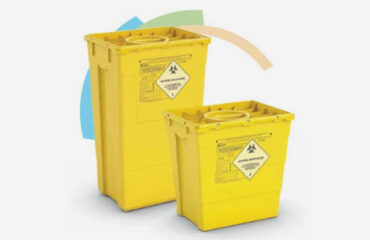The Definitive Guide to Reclaim Waste
Table of ContentsGetting My Reclaim Waste To WorkReclaim Waste for Dummies5 Easy Facts About Reclaim Waste ShownWhat Does Reclaim Waste Do?Reclaim Waste - The Facts
Explore the types, occurrences, and forms of fluid waste. Residential sewer waste describes the waste and products from a domestic septic storage tank. This kind of waste is produced by people in houses, institutions, and other structures. This only consists of septic tanks that have a drain area. The appropriate administration and disposal of residential sewer waste require fluid waste to be transferred to a sewer therapy plant where the correct techniques and tools are put on cleanse and dispose of waste.
Commercial waste frequently consists of possible hazards, such as combustible materials or a mixture of liquid and strong waste items, and requires an extra innovative and in-depth disposal process. The disposal of industrial waste normally includes the filtering of waste before transportation to make sure secure and correct disposal. Industrial waste is produced from results and overflow of industrial processes and manufacturing.
This type of waste can not utilize the same sewer monitoring transport or procedures as septic or business fluids. The hazardous waste administration process requires the inspection and testing of liquid waste prior to it goes through the disposal process (liquid waste disposal). Overflow waste is the liquid waste that originates from overflow and excess stormwater in extremely booming locations or cities
Runoff waste can trigger contamination and flooding if not managed properly. Making certain appropriate waste management can avoid catastrophes and lower ecological damage.
Things about Reclaim Waste
Get in touch with PROS Providers today to learn more about our waste administration and disposal solutions and the correct means to take care of the fluid waste you produce.
(https://profile.hatena.ne.jp/reclaimwaste1/)Do you know what occurs to your water when you end, purge the bathroom or drain pipes the washing device? No? Well, it's worth knowing. This supposed 'wastewater' is not only an essential resource but, after treatment, will be released to our land, waterways or the ocean. Used water from toilets, showers, bathrooms, cooking area sinks, washings and industrial processes is called wastewater.

water utilized to cool down machinery or visit their website clean plant and devices). Stormwater, a form of wastewater, is drainage that moves from agricultural and city areas such as roof coverings, parks, yards, roads, courses and gutters right into stormwater drains, after rainfall. Stormwater moves unattended directly to regional creeks or rivers, at some point reaching the sea.
The Greatest Guide To Reclaim Waste
In Queensland, many wastewater is treated at sewage treatment plants. Wastewater is transported from residential or commercial sites through a system of drains and pump terminals, understood as sewage reticulation, to a sewer therapy plant. City governments develop, keep and run most sewer therapy plants. Operators are certified under the Environmental Management Act 1994 to discharge cured wastewater at an appropriate ecological requirement into rivers.
The Department of Natural Resources encourages regional federal governments regarding managing, operating and maintaining sewage systems and therapy plants. In unsewered areas, city governments may need householders to set up specific or family sewer treatment systems to treat domestic wastewater from commodes, kitchen areas, bathrooms and washings. The Division of Natural Resources authorises the use of house systems when they are shown to be effective.
In some brand-new communities, therapy of some stormwater to eliminate trash, sand and gravel has actually begun utilizing gross pollutant traps. Wastewater therapy takes place in 4 phases: Gets rid of solid matter.
Wastewater then flows into huge storage tanks where solids resolve and are gotten rid of as sludge. Grease and scum are skimmed from the surface area. Uses small living microorganisms recognizes as micro-organisms to break down and remove remaining dissolved wastes and great fragments. Micro-organisms and wastes are incorporated in the sludge. Removes nitrogen and phosphorus nutrients that might create algal blossoms in our rivers and endanger aquatic life.
3 Simple Techniques For Reclaim Waste
Nutrient elimination is not readily available in all sewage therapy plants due to the fact that it requires costly specialist tools. It is ending up being extra typical in Queensland. Clear fluid effluent generated after treatment may still include disease-causing micro-organisms. If this effluent is released into waterways such as rivers or the sea, the micro-organisms will ultimately die out.

A lot of wastewater streams into the sewerage system. Under the Act, regional governments administer approvals and licences for eco relevant activities (ERAs) entailing wastewater releases that might have a regional impact.
Not known Details About Reclaim Waste
Or else, samples are taken for laboratory evaluation. Typically many examinations are required to develop the levels of each of the different pollutants such as oils, hefty metals and pesticides in water. Surveillance provides valid details about water high quality and can verify that permit problems are being met. The information obtained with tracking offers the basis for making water top quality choices.